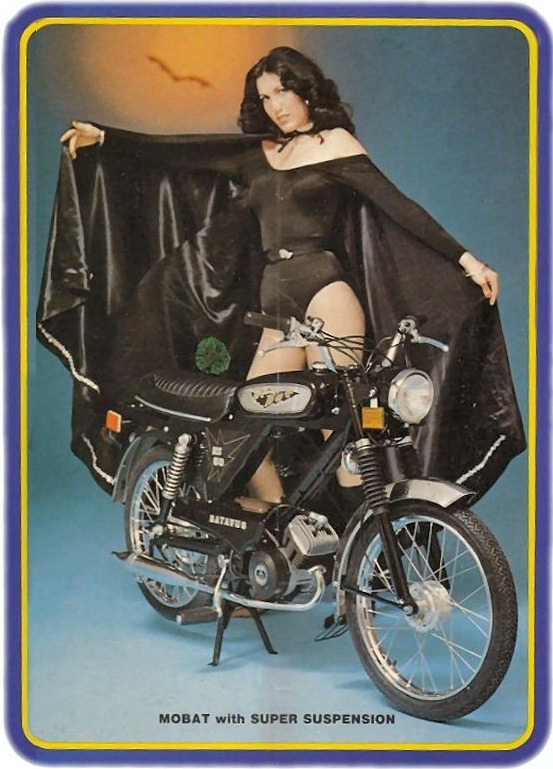Batavus Mopeds: Embracing Tradition, Igniting Innovation
Batavus, a Dutch moped brand, has a rich history dating back to 1904. The company started as a shop selling clocks and small farm machinery but quickly expanded into bicycles. After surviving World War II, Batavus invested in a new factory and began manufacturing its first moped in 1948. The company experienced a golden era in the 1950s and expanded globally in the 1970s. However, the popularity of mopeds declined in the 1980s, and Batavus shifted its focus. Despite this, the brand left a lasting legacy in the world of sports and continued to innovate with various inventions. Today, the Batavus Museum stands as a testament to the brand's history. There are rumors of a possible resurgence of Batavus mopeds, but only time will tell.
NETHERLANDS MOPEDSBATAVUS1950'S
11/21/20233 min read


Batavus Mopeds: Embracing Tradition, Igniting Innovation
In the bustling world of mopeds, few brands carry the weight of history and the spark of innovation quite like Batavus. This Dutch powerhouse has been weaving its tale since 1904, and as we delve into the annals of its journey, a tapestry of bicycles, mopeds, and technological marvels unfolds.
The Origin: Andries Gaastra's Vision
In the quaint year of 1904, Andries Gaastra opened a shop selling clocks and small farm machinery. A visionary, within two years, he incorporated bicycles into his repertoire, marking the birth of Batavus. Fast forward to 1917, and Batavus had already taken over a significant bicycle factory, setting the stage for its meteoric rise.
Surviving the Storm: World War II and Beyond
World War II cast its shadow, temporarily shutting down Batavus's operations. Yet, as the war smoke cleared in 1945, the demand for bicycles surged. Batavus seized the opportunity, investing in a new factory with modern assembly lines, propelling it to the forefront of bike manufacturing. In 1948, Batavus etched its name in history by developing and manufacturing its first moped, a visionary move that would shape its future.
The Golden Era: 1956 Onwards
By 1954, Batavus had become a hub of assorted buildings producing a spectrum of machines. In 1956, a new chapter unfolded with the inauguration of a state-of-the-art factory in Heerenveen. With an area of 6000 square meters and a workforce of 300, Batavus laid the foundation for decades of innovation. The company continued to expand, employing about 650 people by 1977.
Batavus Goes Global: Exporting Dutch Excellence
Batavus wasn't content to stay within Dutch borders. By 1972, it was exporting 60,000 bicycles and 27,000 mopeds abroad. Strongholds in West Germany, Switzerland, Iran, Israel, Belgium, and Greece were testimony to Batavus's global imprint. Turkey even witnessed the local manufacture of Batavus mopeds under license in 1972.
Mopeds Galore: Unveiling the Range
The 1970s saw Batavus's moped invasion, with models like the Go-Go VA making waves in the UK. The MK 4S, a Rolls-Royce of sports mopeds, stole the spotlight at the Earls Court Show in 1976. Powered by the Sachs four-speed motor, it boasted an electronic tachometer, battery-operated turn signals, and heavy-duty suspension—a true testament to Batavus's commitment to quality.
The End of an Era: Navigating Change
As bicycle demand soared in the early 1970s, Batavus expanded its factory to 25,000 square meters. However, the moped's popularity waned, and the last one rolled off the assembly line in the early 1980s. Despite this shift, Batavus's legacy lived on.
Beyond Mopeds: A Legacy of Champions
Batavus wasn't just about machines; it was about sporting glory. During the 1986 and 1992 Olympic Games, Batavus proudly served as the official supplier of the Dutch Cycling Union, leaving an indelible mark on the global sporting stage.
Innovations that Echo: Beyond Two Wheels
In 1988, Batavus plunged into research and development, earning the Good Industrial Design award for innovations like the Safety Handlebar, Quick Service chain guard, Safety Stander, and Ergo System stem. These innovations not only exemplified Batavus's commitment to quality but also showcased its foresight into the future of two-wheelers.
Batavus Today: A Living Museum
Close to its factory, the Batavus Museum stands as a testament to the brand's heritage. With a collection boasting veteran bicycles, mopeds, motorcycles, cars, and carriages—one of the largest in Europe—the museum breathes life into Batavus's rich history.
Into the Future: A Batavus Resurgence?
As the sun sets on the Batavus moped era, whispers linger about the possibility of a resurgence. The legacy lives on, not just in the streets but in the hearts of riders who once embraced the thrill of a Batavus ride. Will the Dutch icon re-enter the moped arena, or will its legacy remain a cherished chapter in the annals of two-wheeled history? Only time will tell as we continue riding through the echoes of Batavus's timeless journey.
